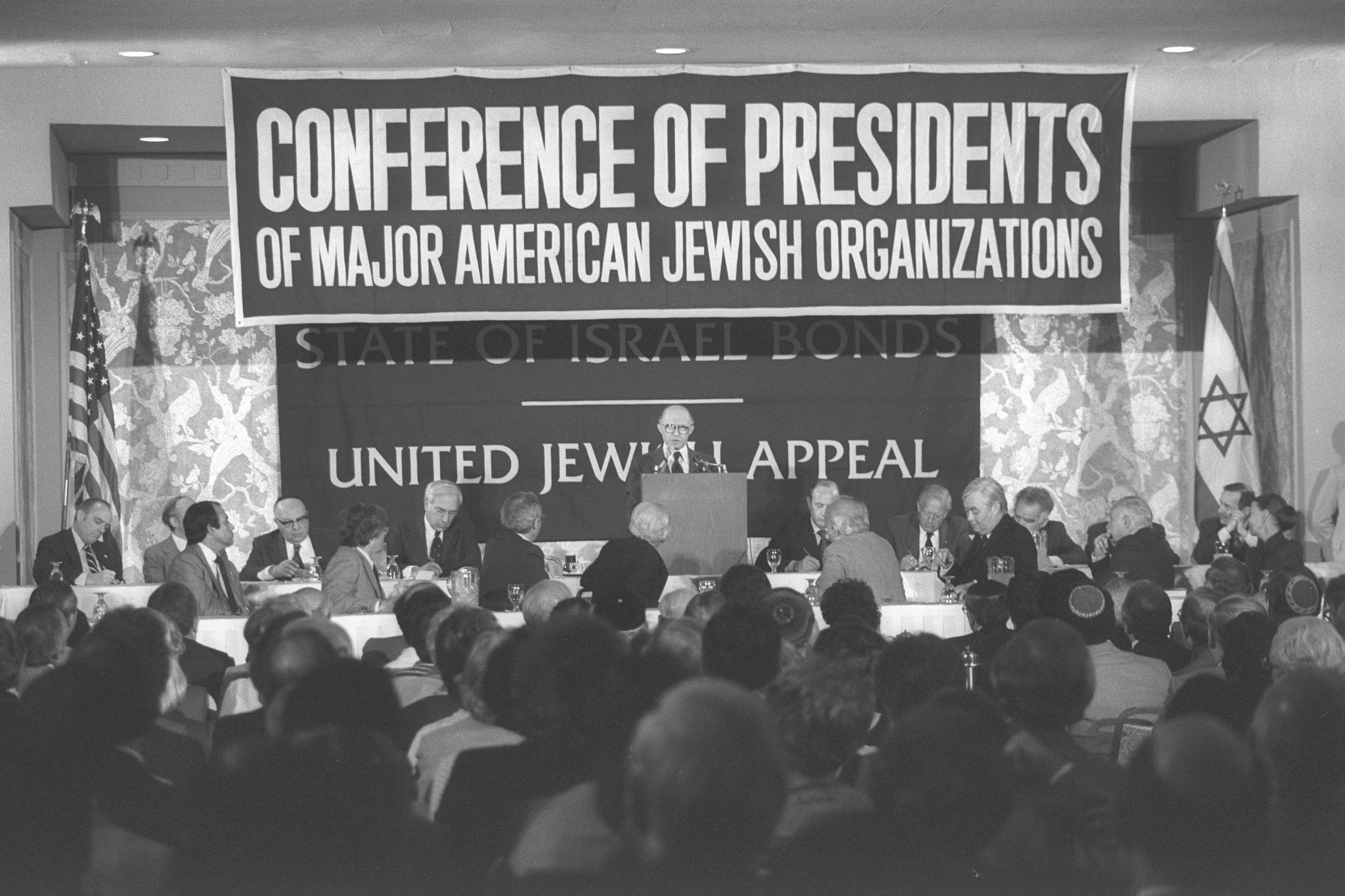In 1984, the American Israel Public Affairs Committee (AIPAC) began disseminating what it described as a “college guide” for understanding the discourse on Israel on U.S. campuses. “American college students are regularly exposed to bitter denunciations of the State of Israel in a way that most Americans are not,” warns the opening chapter of the booklet. It points to a “barrage of propaganda which is hostile not only to particular policies of a given government of Israel but also to the very right of the Jewish state to exist,” and which is, the authors continue, “designed to delegitimize the one viable democracy in the Middle East and America’s most reliable ally in the region.”
The responsibility for this “anti-Israel” campaign, the guide repeatedly stresses, lies with “foreign Arab students” who are “growing in number… dramatically.” In the back of the book are distilled dossiers on 100 different American universities, many of which name respected professors such as Edward Said, Walid Khalidi, and James Zogby as spearheading these efforts on their respective campuses.
AIPAC’s guide — which billed itself as “the first full-length study of the anti-Israel campaign on college campuses, and what is being done to fight it” — was far from the lobby group’s first foray into hasbara or pro-Israel messaging. But it was emblematic of the American-Jewish establishment’s stepped-up efforts to combat criticism of Israel following a massive blow to the country’s reputation two years earlier, when the Likud-led government staged a brutal invasion and occupation of Lebanon.
Indeed, in its desperate effort to insist that the images and reports filtering out of Lebanon were to be doubted or even disbelieved, the unified hasbara response to the 1982 war helped solidify many of the approaches that are now automatically deployed when Israeli aggression makes international headlines. The dissembling; the accusations of bias and lying by omission or misrepresentation; the minimizing or dismissal of Palestinian and Arab suffering — all these formed the backbone of a playbook wheeled out by many American-Jewish groups, from the First Intifada to the 2014 assault on Gaza to the uprising of May 2021.
Circling the wagons
Hasbara efforts in the United States had already begun intensifying in the years leading up to the 1982 Lebanon War. In the mid-1970s, as the occupation of the West Bank, Gaza, East Jerusalem, and the Golan Heights wore on and Israel’s settlement project gathered pace, AIPAC and the Anti-Defamation League (ADL) began collecting files on hundreds of public figures and commentators in an attempt to stem the ostensible tide of so-called “Arab propaganda” that, they claimed, was sweeping the American public discourse.
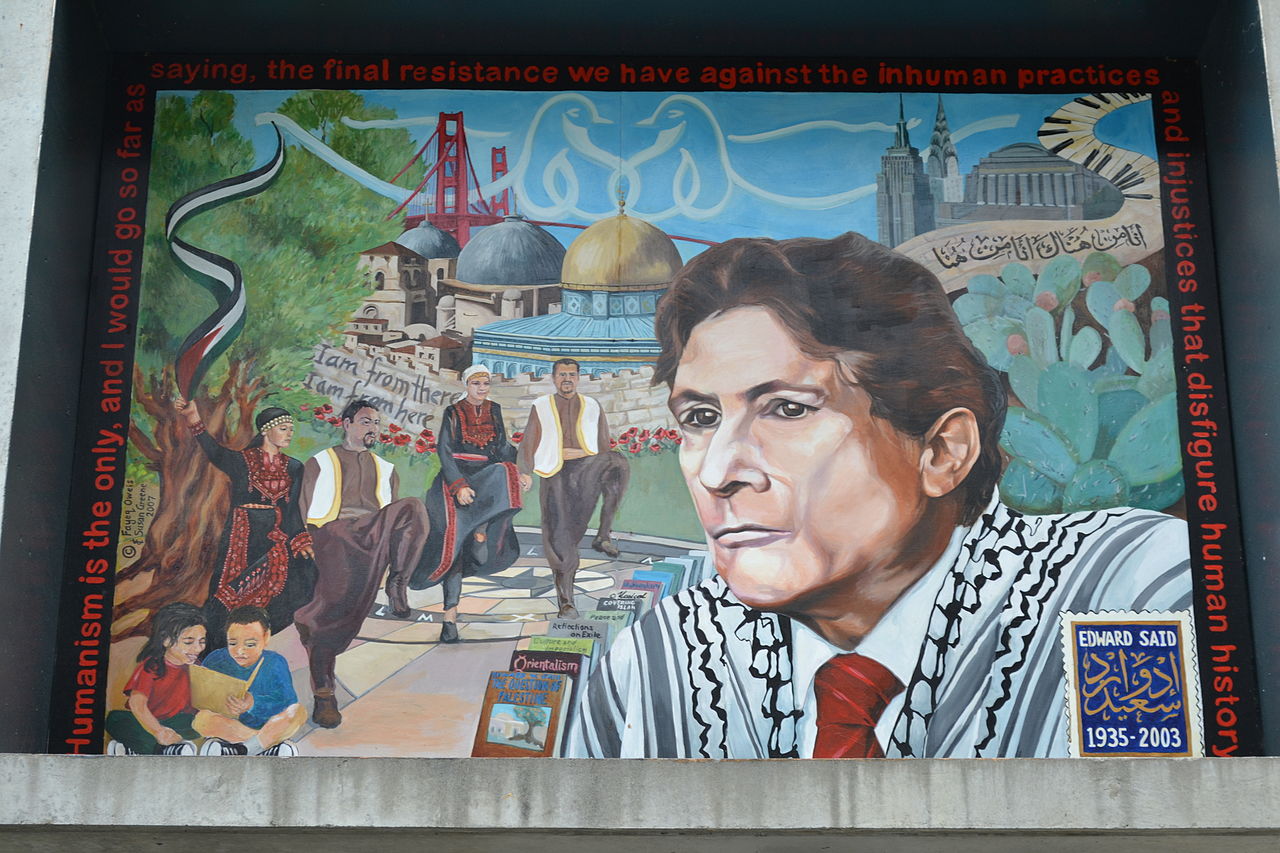
In so doing, the organizations strove to associate that criticism with antisemitism while painting Arabs, and especially Muslims, as the source of this hatred, in keeping with a wider trend of portraying support for Israel as a shared “Judeo-Christian” value. Core to this mission, too, was the strategy of discrediting people who spoke up against Israel’s repressive policies, while insisting on Israel’s liberal and democratic bona fides.
These efforts coincided with the establishment of hawkish pro-Israel think tanks following the Yom Kippur War of 1973. The Jewish Institute for the National Security of America (JINSA), among others, sought to present Israel as a strategic asset to the United States and thus boost U.S. support for Israeli security, including through military spending, while justifying Israel’s military expansionism and repression of Palestinians.
The campaign to defend Israel by presenting it as a liberatory project grew more complicated with the election of Likud’s Menachem Begin, and with him the country’s first self-identified right-wing government, in the “upheaval” of 1977 that ousted the longtime ruling Labor Zionist camp. Yet mainstream American-Jewish groups — rather than following the lead of the community they represented, most of which disapproved of Likud — fell in line with Begin’s party, even as they continued to trumpet Israel as a place of democracy and equality.
That political recalibration guided these groups when, in June 1982, Israel invaded Lebanon. Before then, as the late scholar Amy Kaplan observed, American journalists had often contrasted Israel’s 1967 Six-Day War and the United States’ Vietnam War in part by comparing the landscapes of their respective battlegrounds: the Sinai desert, they claimed, reflected the simplicity of Israel’s purpose and victory, while the Vietnamese jungle represented the American quagmire.
However, as reports of Israel’s siege of Beirut filled the American media, some American commentators began dubbing the war “Israel’s Vietnam,” reversing the more favorable differentiations asserted in 1967, and instead implying a ruinous misadventure inflicted on an undeserving population. The gruesome nadir of the military venture came with the Sabra and Shatila massacre, during which Christian Phalangist troops entered the two Palestinian refugee camps with the consent of the Israeli army (who also shot flares that illuminated the camps’ narrow alleyways), and slaughtered hundreds of Palestinian civilians.
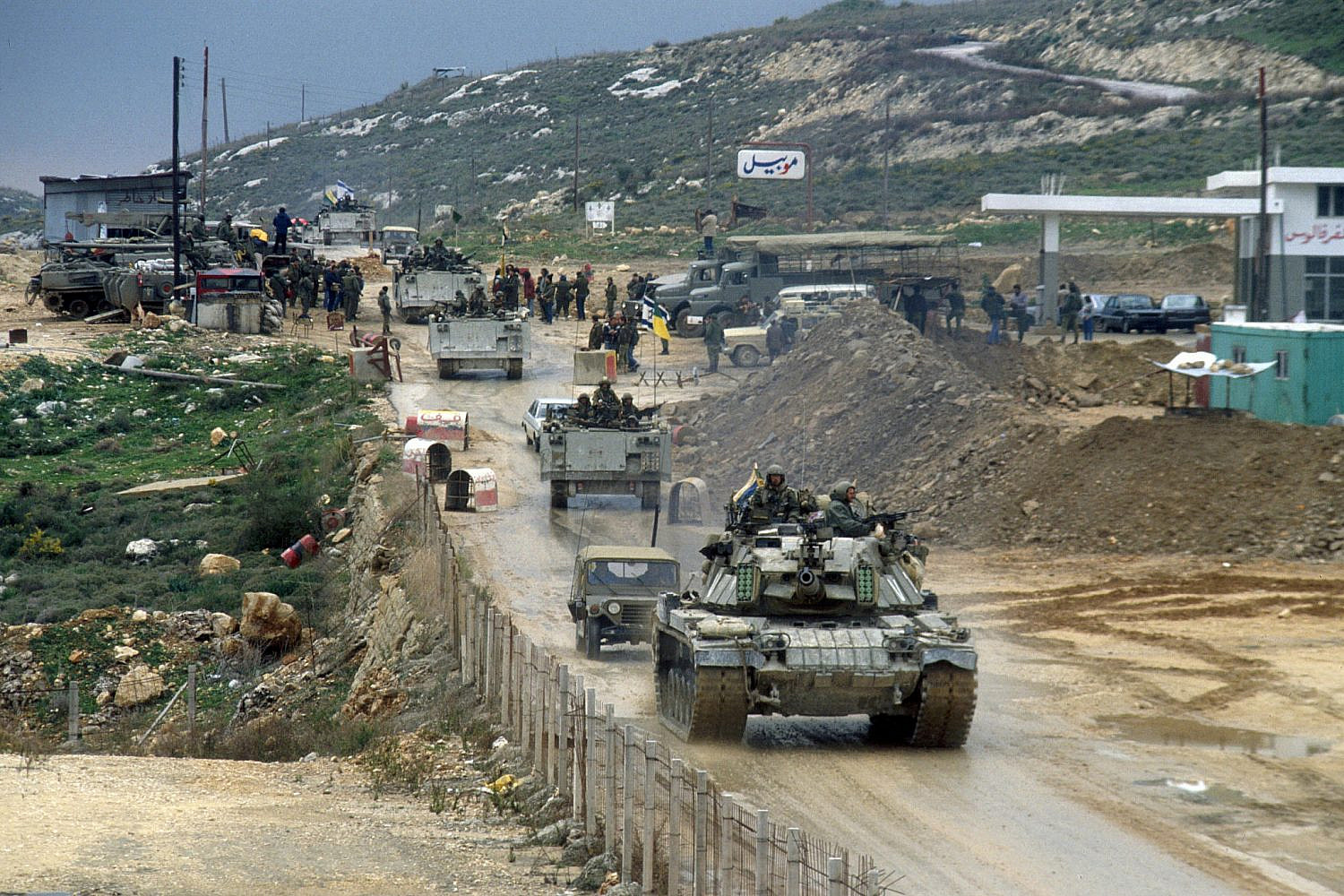
Mainstream American-Jewish groups responded to the shifting discourse in kind, circling the wagons and insisting on the necessity and morality of the Lebanon war, while decrying Israel’s unfair treatment by the U.S. media. This defensive line differed little from that of more right-wing Jewish institutions and neoconservative commentators, who deemed Israel to be waging an existential battle for the forces of “good” (the “West”) against “evil” (Islam, the Arab world), yet for which it was being maligned simply because it was doing what was necessary.
American Jewish Committee National President Maynard Wishner, for example, after visiting Lebanon in mid-July, expressed his “dismay” at what he saw as the American media’s insufficiently critical characterization of the Palestine Liberation Organization (PLO). Julius Berman, the newly-appointed head of the Conference of Presidents of Major American-Jewish Organizations (COP), deflected criticisms of civilian deaths inflicted by Israel, claiming they had come about purely as a result of Syrian and Palestinian forces attacking Israeli troops from within civilian populations. And the United Jewish Appeal and the Jewish Community Relations Council staged marquee events in New York to demonstrate, in their view, American Jews’ overwhelming support for the invasion (over which the community was, in fact, deeply divided), while raising millions of dollars for Israel in the process.
In an article titled “J’accuse,” published just before the Sabra and Shatila massacre, Norman Podhoretz — the editor-in-chief of Commentary, the unofficial organ of the American-Jewish neoconservative movement — defended the war and lamented the criticism that had been heaped upon Israel for its actions in Beirut, while arguing for “recogni[tion] that the vilification of Israel is the phenomenon to be addressed, and not the Israeli behavior that supposedly provoked it.”
Conservative scholar Ruth Wisse took a similar tack while reviewing the Argentinian-Israeli journalist Jacobo Timerman’s anti-war memoir, “The Longest War.” Shortly before her essay was published in March 1983, the Kahan Commission — which was appointed by the Israeli government to investigate its own involvement in Sabra and Shatila — released its report, finding the Israeli army “indirectly responsible” and Defense Minister Ariel Sharon “personal[ly] responsible” for the massacre. Nonetheless, Wisse defended Israel’s actions in Lebanon while omitting any mention of Sabra and Shatila, emphasizing the care Israeli troops had taken not to cause damage to Lebanon’s cities during their occupation. For good measure, Wisse compared Timerman to the extremist rabbi and head of the fascist Kach party Meir Kahane, citing their “share[d]… contempt for Israeli democracy.”
In Washington, meanwhile, JINSA argued that the Israeli army was doing “the dirty work… for the Western world at large by dealing a serious blow to Palestinian and other international terrorism.” The military had, JINSA claimed, gone above and beyond in its efforts to spare civilians, including by leafleting residential areas about to be attacked, and putting its own troops at greater risk of harm in the process. Like COP head Berman, JINSA centered accusations of the PLO using civilians as human shields in its assessment of the casualties, and criticized the media for downplaying these narratives. Slamming critics of Israel as “phoney [sic] intellectuals in safe harbors,” JINSA heralded the Lebanon invasion as “a cure (albeit a painful one) for a deadly cancer.”
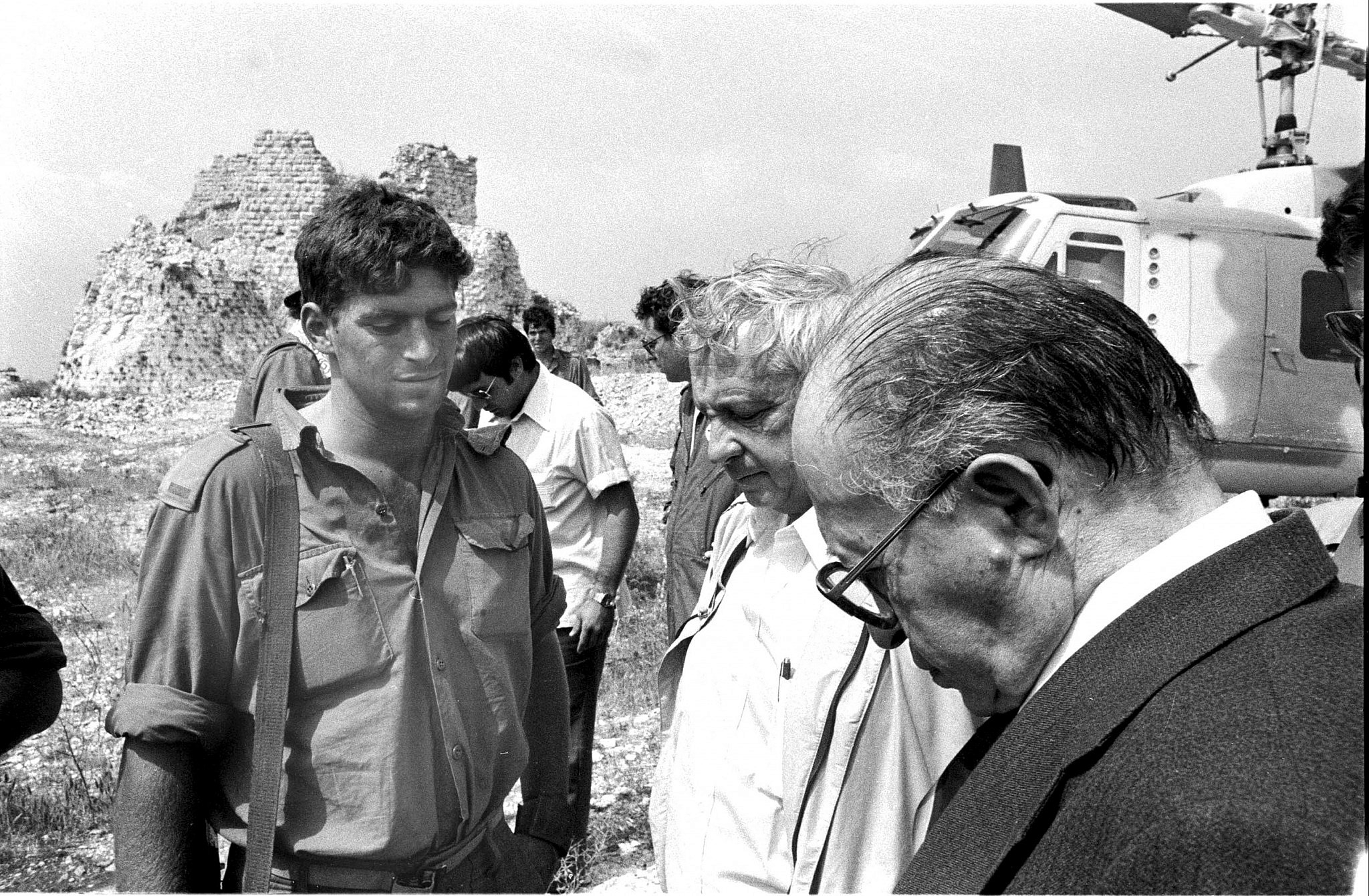
To bolster the efforts to discredit journalists who reported on Israel’s actions in Lebanon, a new watchdog organization was formed specifically to monitor and critique what it saw as anti-Israel mainstream media coverage of the war. The Committee for Accuracy in Middle East Reporting in America (CAMERA), which operates to this day, was founded by the late Winifred Meiselman in particular to counter the Washington Post’s reporting on the conflict. It refined an approach of reflexively attacking any report — even if visually documented — that cast aspersions, whether implicitly or explicitly, on the moral standing of Israel and its army.
Harmonizing the message
The coalescence of proto-Pallywood tactics and narratives in the United States was shored up by the arrival, in July 1982, of the Israeli embassy’s new deputy chief of mission in Washington. Benjamin Netanyahu had already made a name for himself as head of the Jonathan Institute, an anti-terrorism think tank in Jerusalem whose inaugural conference in 1979 brought together, among others, leading Republican and Israeli politicians.
Now, with the Reagan administration seemingly gearing up to take action against Israel over its destructive invasion, Israeli ambassador Moshe Arens picked Netanyahu, as Anshel Pfeffer notes in his biography, due to his skill in public relations. Netanyahu’s American education, fluency in Reaganomics, and budding relationships with U.S. politicians through his work with the Jonathan Institute put him in good stead to try and change the narrative around Israel.
The future prime minister set out to do exactly that. Netanyahu went on the attack, ensuring that the Israeli embassy parried charges of wanton destruction and disregard for non-combatants, while transferring exclusive blame for the plight of Lebanese civilians onto the PLO. Although these propaganda campaigns failed to fully stem the tide of criticism, his framing of issues through the lens of terrorism and national security — and, by extension, global security — struck notes that were legible to both the American-Jewish establishment and the neoconservative political elite.
As Israel’s occupation of Beirut neared its end, then, a distinct harmony emerged between the messages issued from mainstream American-Jewish leaders, American-Jewish neoconservatives, and the Israeli embassy. Palestinian and Lebanese civilian suffering, they all claimed, was exaggerated; when it did occur, it was the fault of the PLO; the Israeli army was above reproach; and the U.S. media was misleading Americans — whether due to its reporters subscribing to the “new antisemitism” or being duped by the PLO.
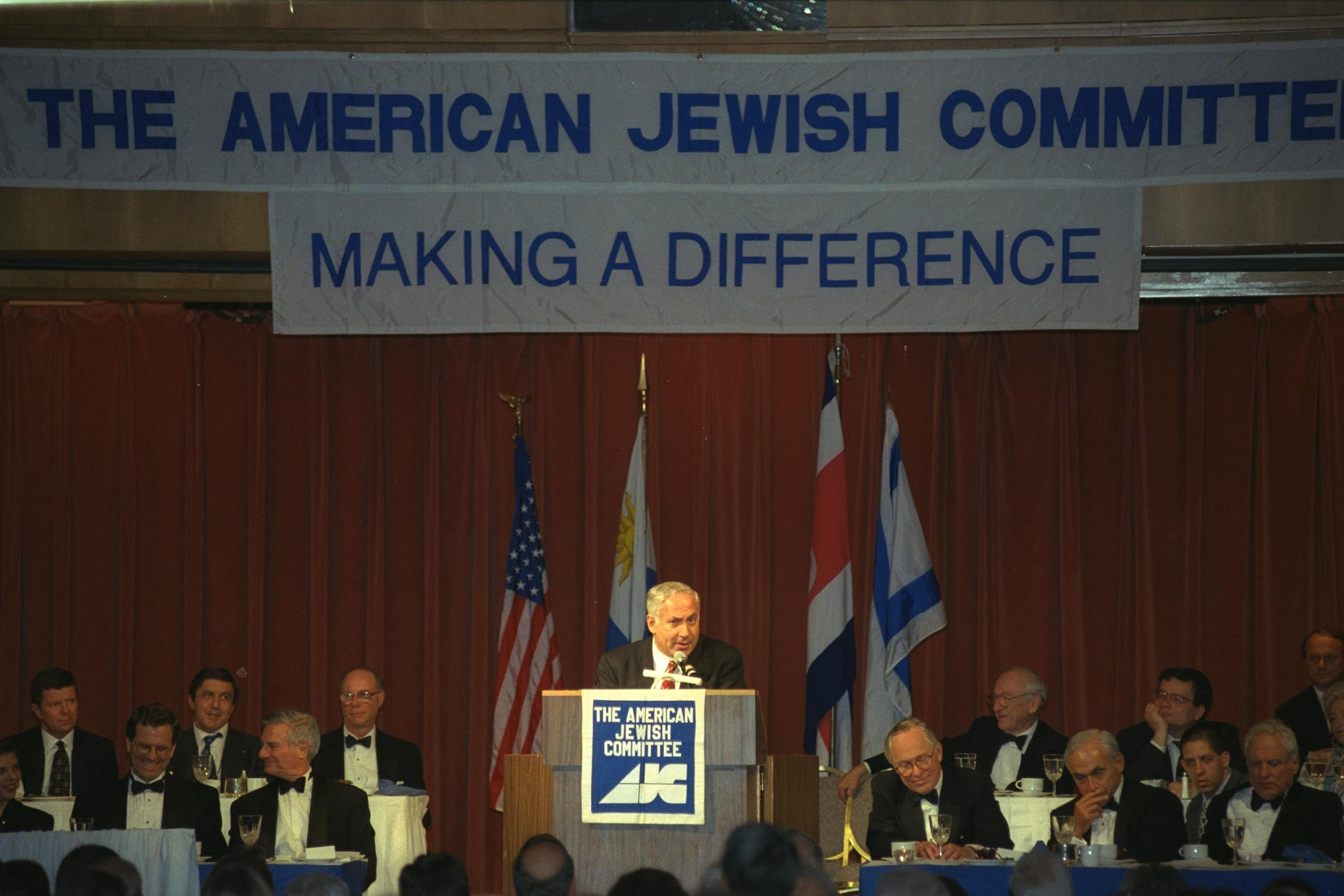
The horrors of Sabra and Shatila did little to change this trajectory. While the massacres provoked some soul-searching among American-Jewish leaders, much of the immediate reaction was business as usual: deflection and denial. COP head Berman expressed his “shock” at the killings but stressed that any suggestion of Israeli involvement must be “categorically rejected”; Jewish history was “too full of pogroms and massacres,” he said, to make such a thing possible. Zionist Organization of America head Ivan Novick, meanwhile, conceded that Israeli forces might have “misjudged the situation or been misinformed,” but that this was “not a reason for a close friend and ally like the United States to come down hard on you.”
Not long after, American-Jewish leaders issued a joint call for Prime Minister Begin to open a commission of inquiry into Sabra and Shatila (with the Kahan Commission eventually being formed). Yet even that, as Amy Kaplan notes in “Our American Israel,” became an avenue through which to celebrate Israel’s redemption; its willingness to isolate and exceptionalize a moral lapse was, ostensibly, evidence that the country had recaptured the supposed innocence it had lost during that bloody September.
JINSA, by contrast, stuck to its guns. In its November 1982 newsletter, the think tank ran extensive articles downplaying the death and destruction the Israeli army caused in Lebanon, with reports that were based on an October 1982 trip JINSA members had taken to Israel. During an extended meeting with Ariel Sharon, to whom the organization relayed its “sincere thanks” in the newsletter, the defense minister told the group that although Israel invaded Lebanon for its own interests, “the rest of the Free World benefitted [sic].” The newsletter mentions Sabra and Shatila only once — not in connection to the massacre, but in relation to a point Sharon made about the urban geography of the refugee camps in Lebanon. And in response to a softball, leading question, Sharon told JINSA that Israel needed help in “tell[ing] our case to the world.”
That help would become increasingly plentiful over the next few years. In the immediate aftermath of the invasion, the ADL published a report alleging inaccurate and imbalanced television news coverage of the war (with a cut-off date of Sept. 1, two weeks prior to the Sabra and Shatila massacre). The report criticized “melodramatic” references to Israeli censorship and questioned the “[l]ingering” focus on those killed and wounded in the conflict, at the expense of reporting on things such as “Israeli relief efforts” in Lebanon.
The following year, in 1983, the ADL followed up with a guide which was essentially a blacklist claiming to expose the “pro-Arab propaganda network” that “erupted in full force” after the Lebanon War. AIPAC distributed a similar document not long after, titled “The Campaign to Discredit Israel” — part of the same publication series, innocuously titled “The AIPAC Papers on U.S.-Israel Relations,” as its campus guide. The blacklists drafted by both organizations overlap considerably with a separate blacklist circulated by Tagar, the short-lived campus arm of the far-right Zionist youth group Betar, in 1983.
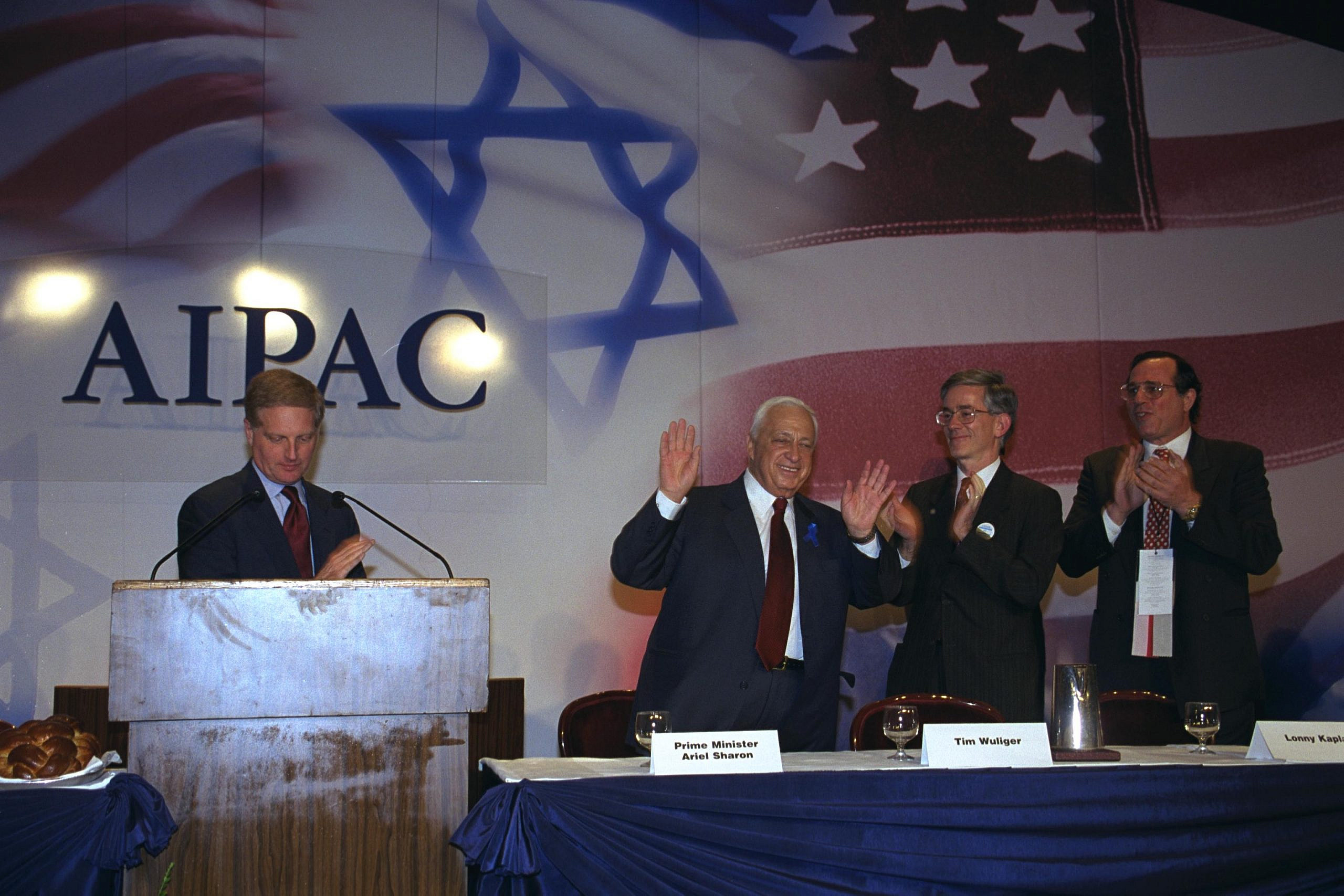
And, in August 1983, the American Jewish Congress (AJC) held a conference in Jerusalem under the banner “Hasbara: Israel’s Public Image: Problems and Remedies,” during which AJC head Howard Squadron characterized the war as a hasbara “crisis.” One of the speakers, Likud MK and future prime minister Ehud Olmert, opined that “[o]ne of the most crucial services that Jews in the United States render to the state is that of Hasbara on behalf of the State of Israel.”
A faltering consensus?
Forty years later, much of what was honed during — if not initiated by — the Lebanon War has moved to the center of the American-Jewish establishment’s efforts to ostracize and demonize critics of Israel, most of all Palestinians. McCarthyist surveillance and record-keeping has gone from being a semi-covert branch of some organizations’ work to the proud raison d’être of well-funded groups, of which at least one — the college watchdog Canary Mission — has guided Israeli border officials on whom to bar from entering the country.
Media watchdog organizations and armchair “experts” have also proliferated, whose sole framework is to portray Israel as the victim of bad press, not least by insisting that any claim of Palestinian suffering merits automatic skepticism. This approach mushroomed, and crystallized, into the racist “Pallywood” smear, which veers from justifying the harm inflicted on Palestinians to questioning whether the injury or death even took place at all.
These tactics, which we now call “disinformation,” have all been enlisted by hasbarists to sow doubt whenever an Israeli atrocity makes international headlines — whether it’s the gunning down of protesters at the Gaza fence, the attempted destruction of Palestinian villages on both sides of the Green Line, or the killing of a renowned Palestinian journalist. All the while, the rightward lurch of the American-Jewish establishment has continued unabated, accelerating ever since Netanyahu — who, as the war raged in 1982, vowed to embassy colleagues that he would one day become prime minister — finally got his wish in 1996.
These U.S.-Jewish groups have, of course, faced similar public relations “crises” since 1982. The brutal repression of the First Intifada, Israel’s repeated bombardments of Gaza since 2009, and inflection points such as in May 2021 — in which the deepening ties between settler and state violence, and the spread of an occupation-like mentality within the Green Line, were clear for all to see — have consistently forced American-Jewish establishment leaders to choose between justice and hasbara. With few exceptions, they have opted for the latter, choosing to hound those who deliver the message about Israeli oppression — whether they be students, activists, journalists, academics, or politicians.
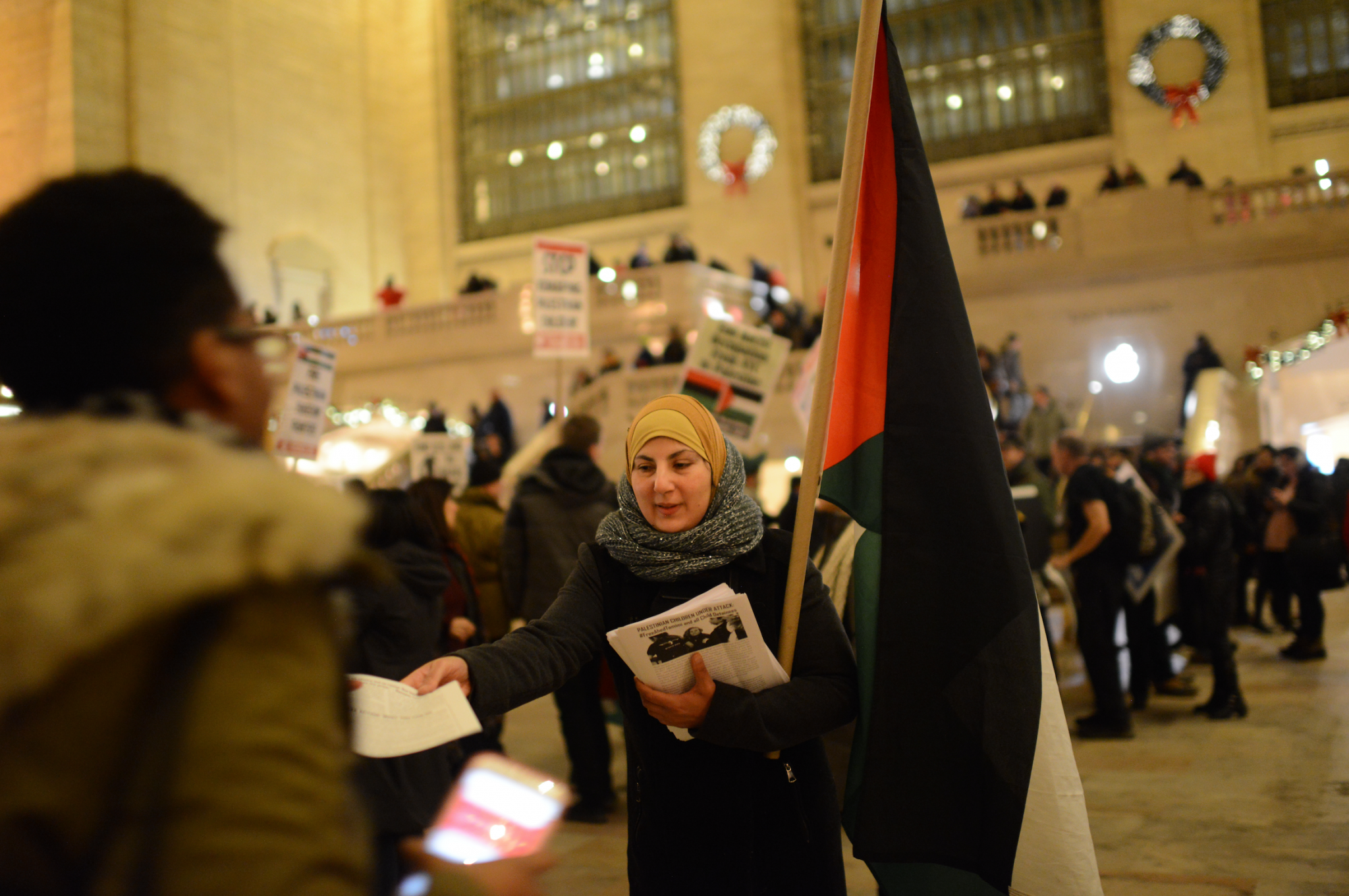
At the same time, the relentless aggregation of Israeli rights abuses, and mainstream American-Jewish groups’ refusal to adequately acknowledge them, has only served to undermine the entire hasbara project. The tighter the Israeli government and its U.S. supporters hold onto the myth of Israel’s peerless morality, the more sections of the American-Jewish community — in particular younger generations — feel driven to openly denounce Israel’s actions and support the Palestinian struggle. That, in combination with tireless organizing by Palestinians and their allies in the United States, is gradually working to dismantle the so-called “consensus” on Israel.
Even so, the American-Jewish establishment continues to hold a formidable and unwavering front. Today, Netanyahu once again has a path to return to power despite a string of criminal allegations; Israeli forces continue to execute and expel Palestinians with impunity; and a disciple of the far-right Kahane has a genuine shot at winning a high-level ministerial portfolio in the next Israeli government. Yet the ADL, AIPAC, the COP, et al can still be found concentrating their energies on lionizing Israel’s supposed modeling of liberal equality and justice, all while decrying the deadly harm that the media, academic institutions, left-wing groups, and above all Palestinians, are doing to Israel’s good name. The show, after all, must go on.

